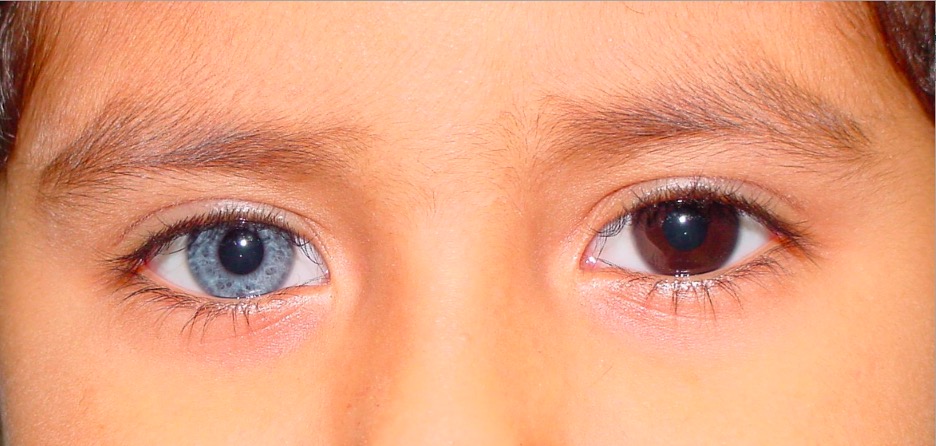Heterochromia: What is it, Causes, Types, Risk Factors, and Treatment
Heterochromia occurs when the iris (coloured tissue at the front of the eye) of both your eyes are of different colours. Although mostly harmless, heterochromia can sometimes indicate an underlying medical condition.

What are its different types?
There are 3 types of heterochromia:
- Complete heterochromia (heterochromia iridis) happens when one iris is of a different colour than the other. When you have this condition, you may have one blue eye and one green eye.
- Segmental heterochromia (heterochromia iridum) is a condition whereby different parts of one iris are different colours
- Central heterochromia happens when the outer ring of your iris has a different color from the rest of it.
What causes heterochromia?
There are many reasons for heterochromia. You can be born with the condition or develop it right after birth. Most children born with the condition will not have any other problems with their eyes or general health. In some cases, the condition can indicate another underlying medical condition.
Heterochromia in infants can be due to:
- Horner’s syndrome (caused by disruption of a nerve pathway from the brain to the face and eye on one side of the body)
- Piebaldism (absence of cells in certain areas of the skin and hair)
- Hirschsprung disease (birth defect in which some cells are missing in the large intestine)
- von Recklinghausen disease (development of multiple non-cancerous tumors of nerves and skin and areas of abnormal pigmentation)
- Bourneville disease (multiple benign tumors of the embryonic ectoderm, for example, skin, eyes and nervous system)
- Parry-Romberg syndrome (a condition where the tissue of one side of the face gradually wastes away)
Acquired heterochromia happens when you develop the condition later in life and its causes include:
- Eye injury
- Glaucoma (eye disease whereby fluid buildup increases eye pressure might lead to vision loss and is classified into open-angle glaucoma and angle-closure glaucoma)
- Some medicines including glaucoma drugs such as bimatoprost (Latisse, Lumigan) and latanoprost (Xalatan).
- Neuroblastoma (cancer of the nerve cells that typically involves children under 10). When tumors exert on the nerves in the chest or neck, children might suffer from a drooping eyelid and a small pupil and can also develop heterochromia.
- Melanoma (Melanin is the pigment that provides colour to your eyes, hair, and skin. A dark spot on your iris is a sign of eye melanoma and accompanying symptoms include blurry vision or sudden vision loss)
Treatment for heterochromia
Treatment for heterochromia focuses on addressing the underlying causes of the condition. If there are no other issues with the eyes, treatment may not be essential.
A comprehensive eye check-up is extremely important to detect eye conditions. Make a booking via planoEyecheck now if you are in Singapore!
References
[1] American Academy of Ophthalmology. 2021. Heterochromia. [online]
Available at: <https://www.aao.org/eye-health/diseases/what-is-heterochromia>
[Accessed 21 December 2021].
[2] WebMD. 2021. Heterochromia. [online]
Available at: <https://www.webmd.com/eye-health/heterochromia-iridis>
[Accessed 21 December 2021].
Tools Designed for Healthier Eyes
Explore our specifically designed products and services backed by eye health professionals to help keep your children safe online and their eyes healthy.

